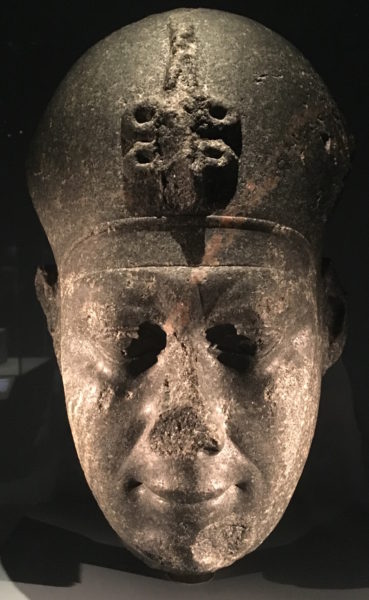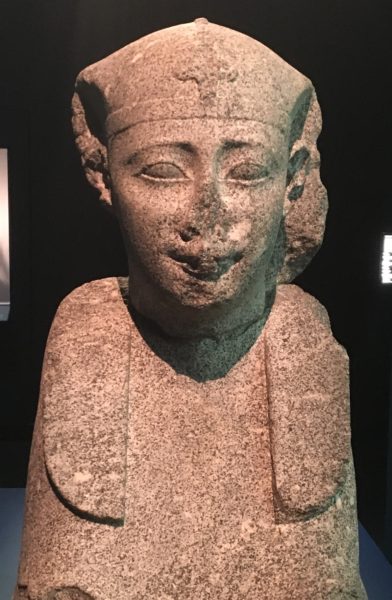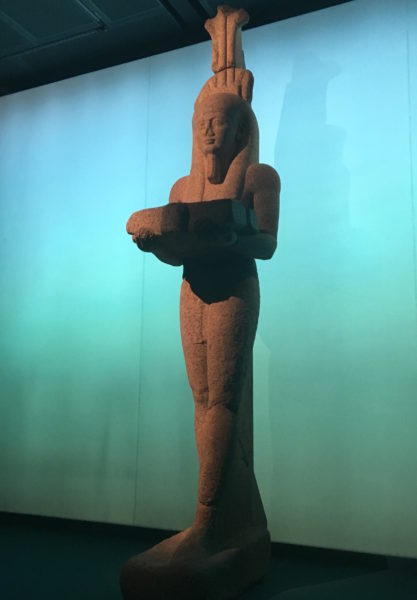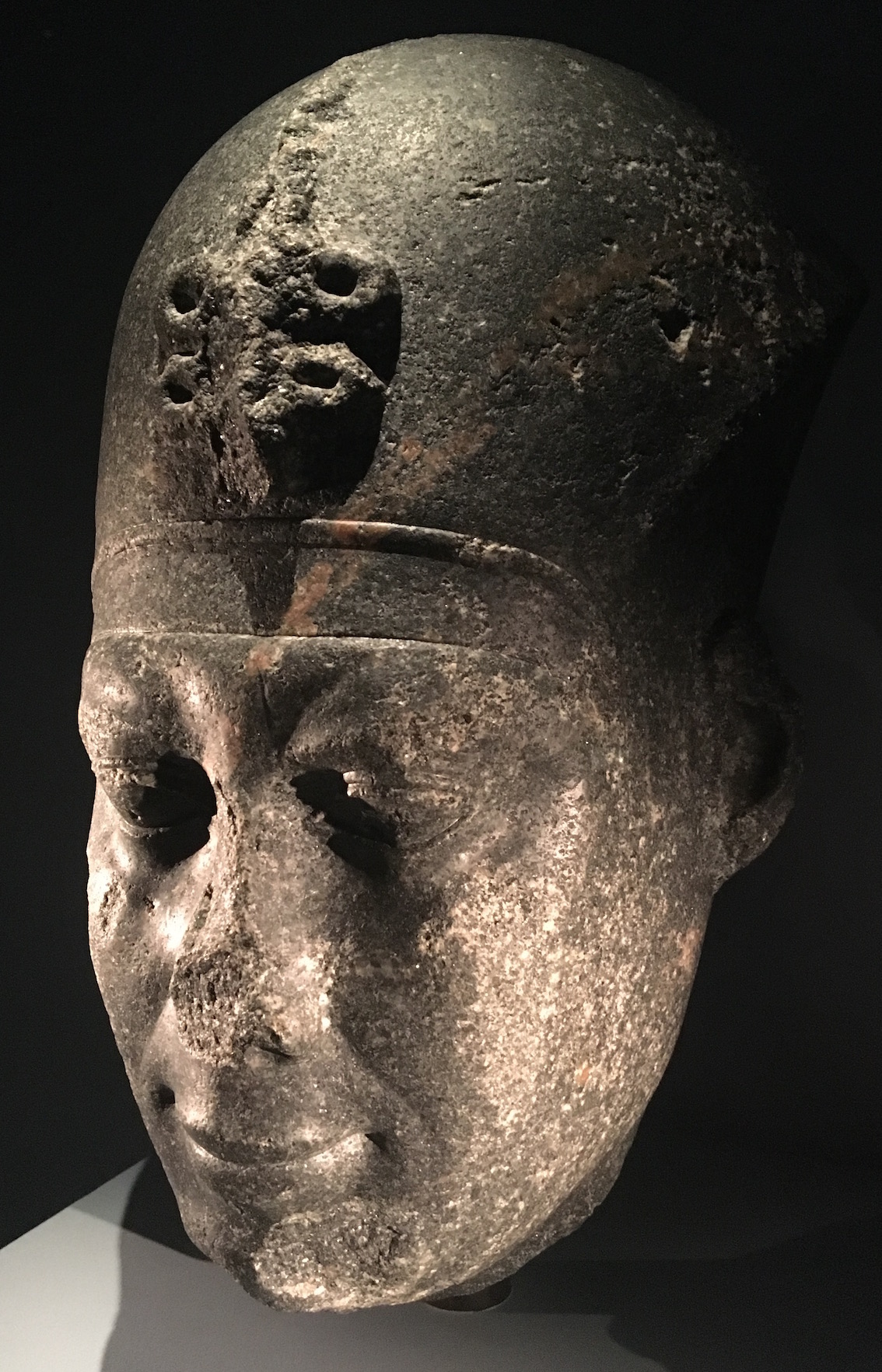The last indigenous king of Kemet
Ruled from 360-342 BCE and was named Nakhthorhebyt, but is perhaps better known by his Greek name Nectanebo. He was the third and last ruler of what we now call the 30th Dynasty, and was the second king to be referred to as ‘Nectanebo’ by the Ancient Greeks.

The statue above is part of an exhibition at the British Museum, London entitled Sunken cities. Egypt’s lost worlds, which runs from 19 May to the 27 November 2016, and represents King Nakhthorhebyt. I can say this with confidence on two counts. Firstly, the double loop of the uraeus (cobra) on his brow, has been associated with this particular ruler and is an unusual feature. Secondly, the “portrait” (a word that the curator who wrote the entry in the catalogue uses. Sunken cities. Egypt’s lost worlds. Edited by F. Goddio and A. Masson-Berghoff. 2016: p. 134) can be linked to Nakhthorhebyt. Many of the 30th Dynasty representation are similar to those of the early Ptolemaic period. And even to specialists, are impossible to tell apart (see below).

The similarities in the early Ptolemaic rulers’ Egyptian-style/Kemite portraits and those of the last indigenous dynasty were probably because of the Persian occupation that occurred in between. The Persian rulers were not resident in Kemet and so funding for large scale royal projects would not have been as forthcoming as under the last Kemite kings or the Macedonian Greeks who ultimately replaced them. Nakhthorhebyt spent much of his reign trying to prevent the Persian invasion.
So, who were the ancient Egyptians?
This is a question that the exhibition fails to answer. On numerous occasions in the exhibition the “native” Egyptians are referred to, and are distinguished from the arrival of Greeks, Macedonians and Romans. However, the only time that Africa is directly referenced is in regard to a group of amulets and moulds that were found at the city of Naukratis, where earlier Greeks settled. Images that are very similar to some of those that I have discussed in previous posts are described in the catalogue as ‘Black Africans’ and are explained as “catering to Greek ideas of foreign and far-away Egypt” (Sunken cities. Egypt’s lost worlds. Edited by F. Goddio and A. Masson-Berghoff. 2016: p. 54). So, where does that leave the “portrait” of the last indigenous ruler? Was it an accurate representation of the people of Kemet at that time? This was, after all, how the ruler himself chose to be presented. There is no mention or discussion of his racialised identity in the exhibition or catalogue.
Once again we find the over-simplification of what is, and is not, “Black African”, a term that is, as noted, used in the catalogue. By continuing to make such distinctions, based on modern European ideals, Kemet is once again subtly removed from its African context and disassociated from indigenous African people. It is interesting that European scholars seem only to identify the depictions that the ancient Greeks and Romans produced to represent the people of Africa, as “African”. It is also notable that the ruler’s Greek name rather than his Kemite name is used by the museum. I have written before about the failure of museums to include the African names of Kemite rulers when describing them, and I will admit to having done so myself, on gallery labels often through lack of space. On reflection, however, I feel that these small points all add up and are subtle ways in which Ancient Egypt continues to be removed from its African context.
Is it worth visiting or buying the catalogue?

In general, the exhibition fails to explore, or explain, the often nuanced impact that Kemet had on ancient European cultures. Many of the identifications of rulers of the Ptolemaic period are, quite simply, incorrect and unexplained. However, the colossal sculptures that are displayed show Kemite sculptors at their best. Not only were they able to create colossal representations of their gods in a tradition that was thousands of years old, but they were able to adapt their skills and styles. Both the exhibition and catalogue acknowledge these achievements, but aren’t quite so forthcoming in presenting these accomplishments as part of an African culture.

